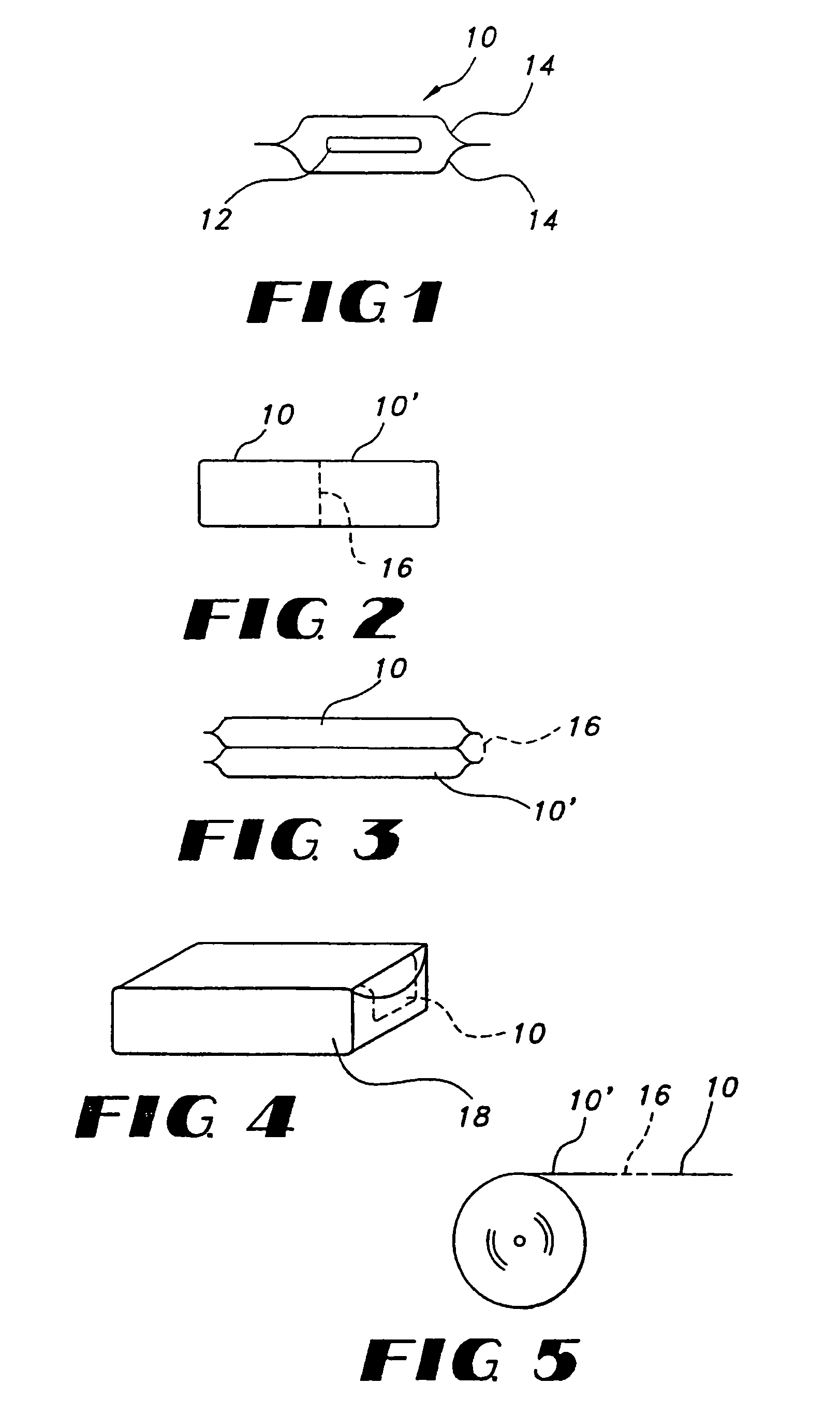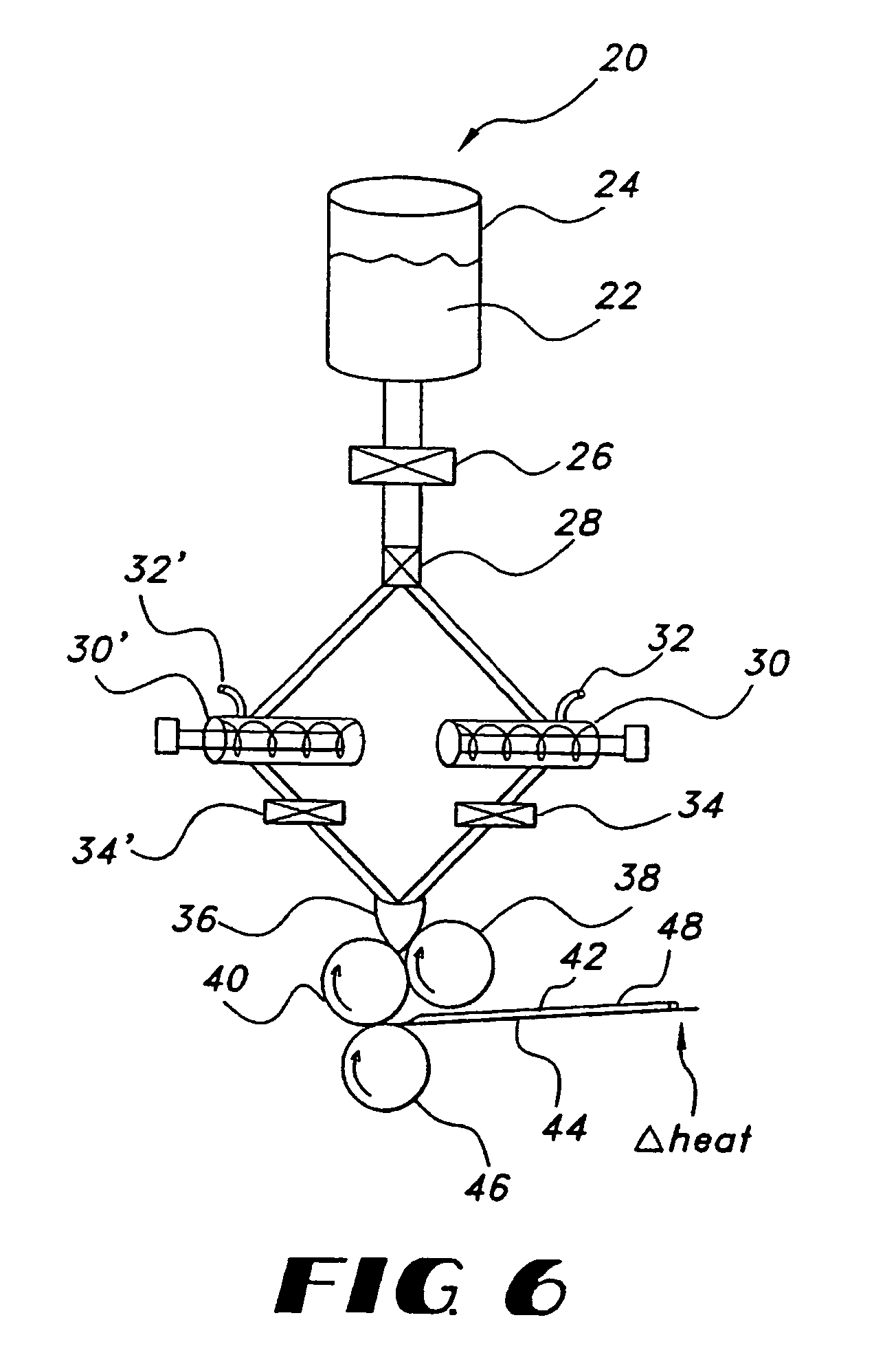Film compositions for delivery of actives
a film composition and active technology, applied in the direction of synthetic polymeric active ingredients, bandages, hair cosmetics, etc., can solve the problems of large differences in the amount of active per film, inability to achieve a high degree of accuracy with respect to the amount of active ingredient in the cut film, and inherently non-uniformity
- Summary
- Abstract
- Description
- Claims
- Application Information
AI Technical Summary
Benefits of technology
Problems solved by technology
Method used
Image
Examples
example 1
Incorporation of a Skin Care Cream into a Film Base
[0266]The present example is directed to the incorporation of a skin care cream into a polyethylene oxide / hydroxypropylmethyl cellulose (70 / 30) film base. The skin care cream used in this example is an emulsion composition. The resulting film was found to be useful as a dissolvable skin lotion film (22.38% solids, by weight). The components are shown below in Table A.
[0267]
TABLE AComponentsWt (g)Polyethylene oxide WSR-N804.73Hydroxypropylmethyl cellulose E152.03Skin care cream13.35Sorbitan monooleate NF (Span 80)20.041Available from Stockhausen, and containing 2.15 g of three ingredients and 1.2 g water.2Available from Farma International, Coral Gables, Florida.
[0268]The skin care cream and sorbitan monooleate from Table A were combined with 29.85 g of distilled water, and added to a Degussa 1100 bowl. Then, a blend of the polyethylene oxide and hydroxypropylmethyl cellulose (Table A) was added to the bowl. The combination of compon...
example 2
Incorporation of a Sunscreen into a Film Base
[0274]The present example is directed to the incorporation of a sunscreen into a polyethylene oxide / hydroxypropylmethyl cellulose (70 / 30) film base. The sunscreen used in this example is an emulsion composition. The resulting film was found to be useful as a dissolvable sunscreen lotion film (22% solids, by weight). The components of the film are shown below in Table C.
[0275]
TABLE CComponentsWt (g)Polyethylene oxide WSR-N804.90Hydroxypropylmethyl cellulose2.10Sunscreen31.92Sorbitan monooleate NF (Span 80)0.0443Blue Lizard sunscreen containing: 1.76 g (20%) active and other ingredients; and 0.16 g water.
[0276]The sunscreen and sorbitan monooleate from Table C were combined with 31.04 g of distilled water and added to a Degussa 1100 bowl. Then, a blend of the polyethylene oxide and hydroxypropylmethyl cellulose was added to the bowl. The combination of components was mixed using the Degussa Dental Multivac Compact under the same conditions ...
example 3
Incorporation of an Antibacterial Hand Soap into a Film Base
[0280]The present example is directed to the incorporation of an antibacterial soap (Equate brand) into a polyethylene oxide / hydroxypropylmethyl cellulose (70 / 30) film base for use as a dissolvable soap film (22% solids, by weight). The components of the film are shown below in Table D.
[0281]
TABLE DComponentsWt (g)Polyethylene oxide WSR-N805.21Hydroxypropylmethyl cellulose E152.23Liquid antibacterial soap49.62Sorbitan monooleate NF (Span 80)0.0444Equate brand containing: 1.32 g (15%) active and other ingredients; and 8.3 g water.
[0282]The antibacterial soap and sorbitan monooleate were combined with 22.9 g distilled water in a Degussa 1100 bowl. Then, a blend of the polyethylene oxide and hydroxypropylmethyl cellulose was added to the bowl. The combination of components was mixed using the Degussa Dental Multivac Compact under the conditions set forth in Table E below.
[0283]
TABLE ETime (min)Mixing Speed (rpm)Vacuum (Hg)2010...
PUM
| Property | Measurement | Unit |
|---|---|---|
| thickness | aaaaa | aaaaa |
| thickness | aaaaa | aaaaa |
| thickness | aaaaa | aaaaa |
Abstract
Description
Claims
Application Information
 Login to View More
Login to View More - R&D
- Intellectual Property
- Life Sciences
- Materials
- Tech Scout
- Unparalleled Data Quality
- Higher Quality Content
- 60% Fewer Hallucinations
Browse by: Latest US Patents, China's latest patents, Technical Efficacy Thesaurus, Application Domain, Technology Topic, Popular Technical Reports.
© 2025 PatSnap. All rights reserved.Legal|Privacy policy|Modern Slavery Act Transparency Statement|Sitemap|About US| Contact US: help@patsnap.com



